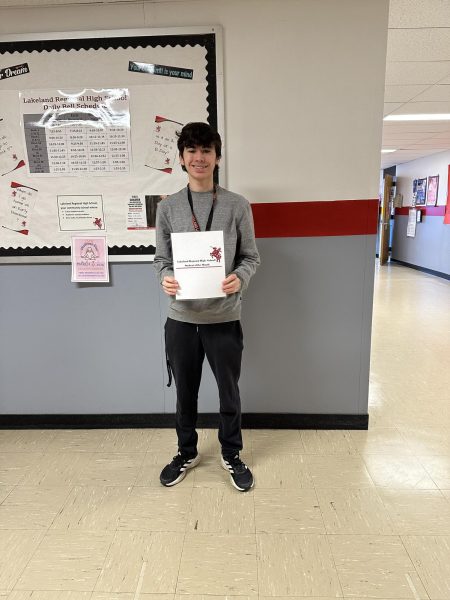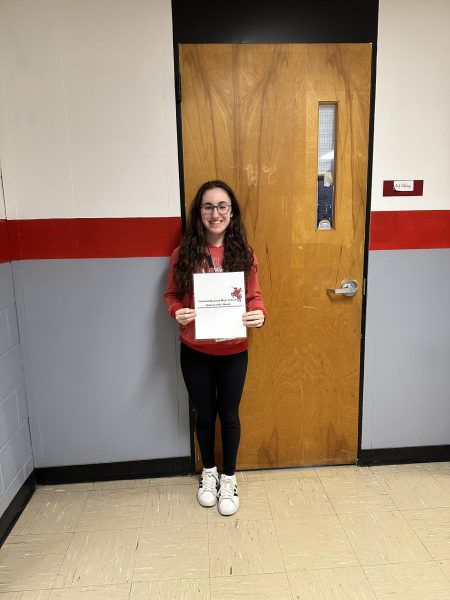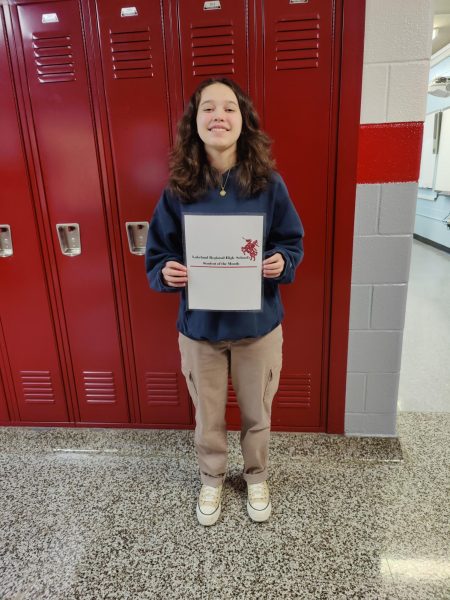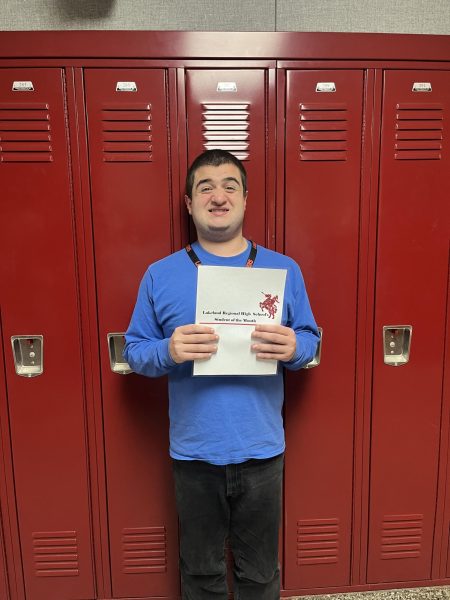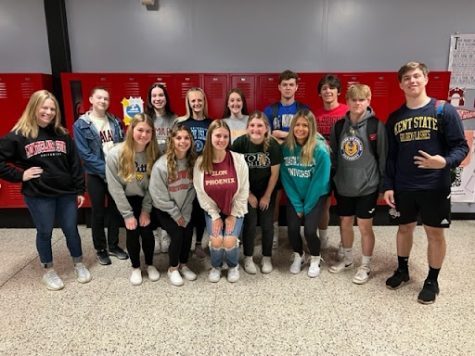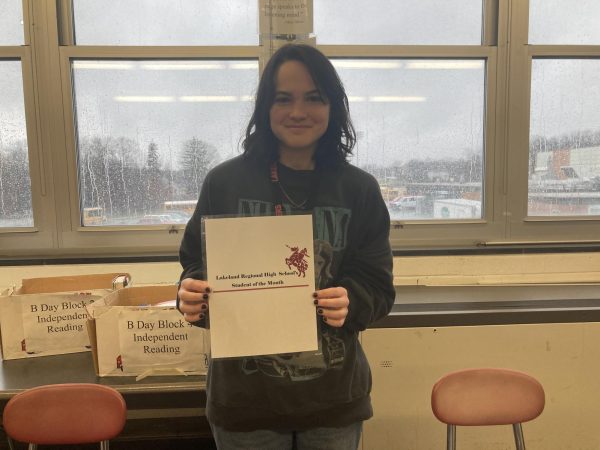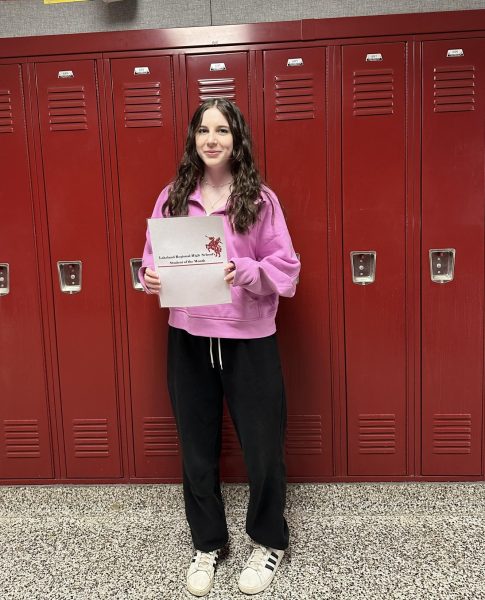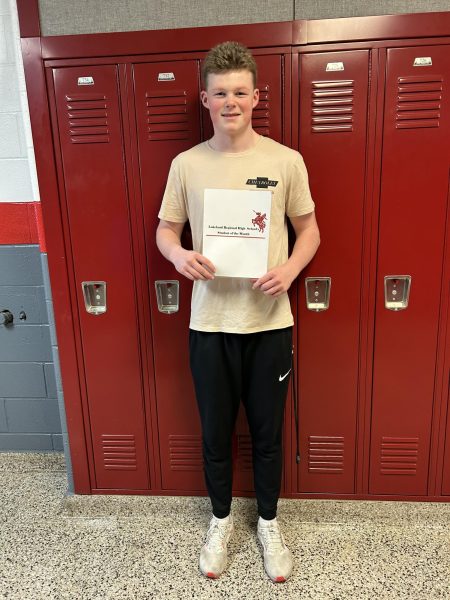Classroom Classics – Teachers’ Favorites
Despite how long ago they written, some books are timeless stories that continue to apply to society and its people.
Some of our English teachers here at Lakeland Regional High School sat down with The Lancer Ledger and shared their favorite novels to teach each year. Here is what they had to say:
Mrs. Ann Pagano
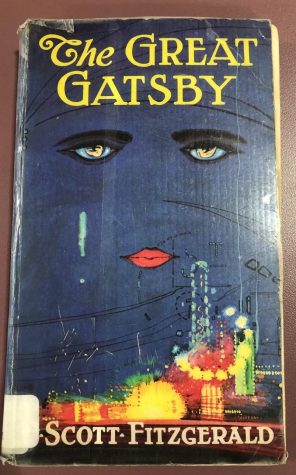
The Great Gatsby, by F. Scott Fitzgerald. It is taught to sophomores.
“I believe in all my students. I believe my students can overcome obstacles and setbacks, and they can achieve their dreams. This belief helps explain why my favorite book to teach is The Great Gatsby by F. Scott Fitzgerald.” Mrs. Pagano explained that The Great Gatsby explores “overcoming hardship and opposition in the pursuit of one’s dreams,” all through a flawed character, Jay Gatsby. Just like Gatsby, we are all flawed, but the story helps teach that being flawed doesn’t make our dreams unachievable. It teaches that believing in yourself and your dream, even when the whole world seems to be against you, is essential to growing as a person and achieving your goals.
Pagano said she also loves teaching The Great Gatsby because it brings her and her students together, and they grow as a class. Not only does she teach the students, but the students also teach her new ideas from the book that she had never seen before. The many different lessons and points of view it has marks it as a timeless classic. “Even when we feel uncomfortable, challenged, and defeated, we learn to believe deeply in ourselves, in our own dreams, and in each other,” and that’s the timeless lesson that makes it a classic.
Mr. Eric White
“The best book that I teach is Hamlet… the play is absolutely mesmerizing in its drama, and it’s intellectual grandeur.” Mr. White believes that readers often fall in love with an author’s writing style, and for him, William Shakespeare’s virtuosity with language is what has him loving Hamlet and the other various works of Shakespeare.
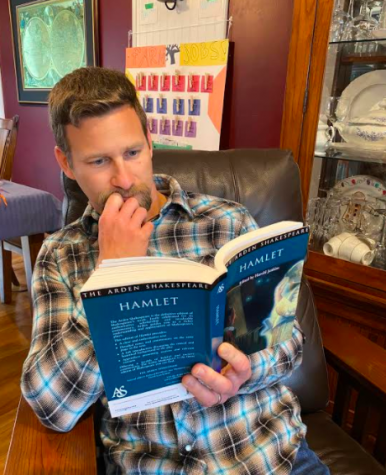
Mr. White submerged in the beautiful language of William Shakespeare while reading Hamlet.
It’s not just the “strangeness and vivid beauty of the language” that makes Hamlet a timeless classic, White believes that Hamlet can be accessed and looked at in two different ways: as a play/performance and as a written story. Because of this, Hamlet has two dimensions to it, and that makes it better by opening up the way that the plot can be experienced. “Reading the book excites a completely different pleasure and mode of understanding than seeing a performance.” As a story, “one can experience the ecstatic hyperdrive of imagination fueled by reading Hamlet.” But by watching the plot unfold on stage, one experiences the ecstatic imagination of another person–a director’s interpretation…”
Due to the two different ways that Hamlet can be experienced, White feels like the plot and story are so much more, and because of that, Shakespeare is able to connect with the audience better than other works that are just written. For example, White allows students to safely experience the duel that takes place near the end of Hamlet. By doing so, students are a part of the fictional world more so than when they are just reading the work, and the whole point of fictional literature is to escape to another world.
Mrs. Jamie Cawley
“My favorite book to read and teach is The Catcher in the Rye. It is easy to see how refreshingly accessible this novel is in comparison to some of the other works typically read in high school.” One of the things that Mrs. Cawley loves the most about the story is the main character, which is Holden. She feels that critics and many readers quickly “dismiss Holden as a whiny, angsty, privileged, annoying teenager,” and in doing so, they fail to realize just how deep and dynamic his character is. There is also a sensitive, vulnerable, and relatable side to Holden, and so, just like most of us, there is a lot more to Holden than one initially thinks. That’s an important lesson about people that Cawley values: people are dynamic, they have different sides, and you’ll never see a person’s full character if you’re quick to judge and assume. Cawley said, “I love [Holden] as a friend, as a son, as a student, as myself even, because I see him in all of those people.” That’s what makes the story so interesting. There are so many different ways to look at a single character and even relate to him.
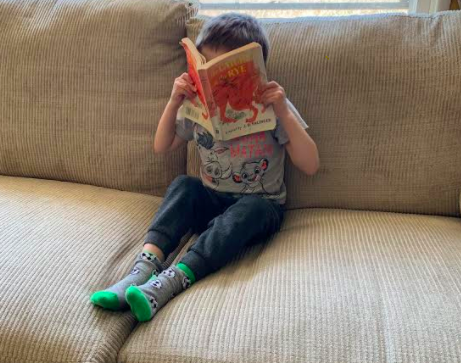
Mrs. Cawley’s son taking a peek at The Catcher in the Rye by J. D. Salinger
There is even more to Holden’s dynamic character that makes him such an interesting character to teach and experience. “What Holden says and what Holden is are two entirely different things, and that’s one of the things I love best about this book. I love asking the students to question the reliability of the narrator and to try to find contradictions in Holden’s closed-off and pretentious tone and what we know to be the truth: that he is just a boy who is struggling to understand the cruel ways of the world, who is confused and repulsed by human behavior, but at the same time desperately craving human interaction.”
The relationship between Holden and his kid sister, Phoebe, is also something that Cawley loves to explore. “Phoebe embodies innocence, the very thing Holden resents having to give up as he enters adulthood.” In our lives, many of us have complicated relationships with our friends, family, and loved ones. The book explores that, and it’s something interesting to look at from different points of view.
Mrs. Laura Fucilli
Like many of us, Mrs. Fucilli falls in love with novels in different ways as her life experiences change what she values and appreciates. That said, her favorite book recently has been The Things They Carried, by Tim O’Brien. This book, unlike most linear plot novels, is a collection of Vietnam War stories, which O’Brien admits may or may not be real.
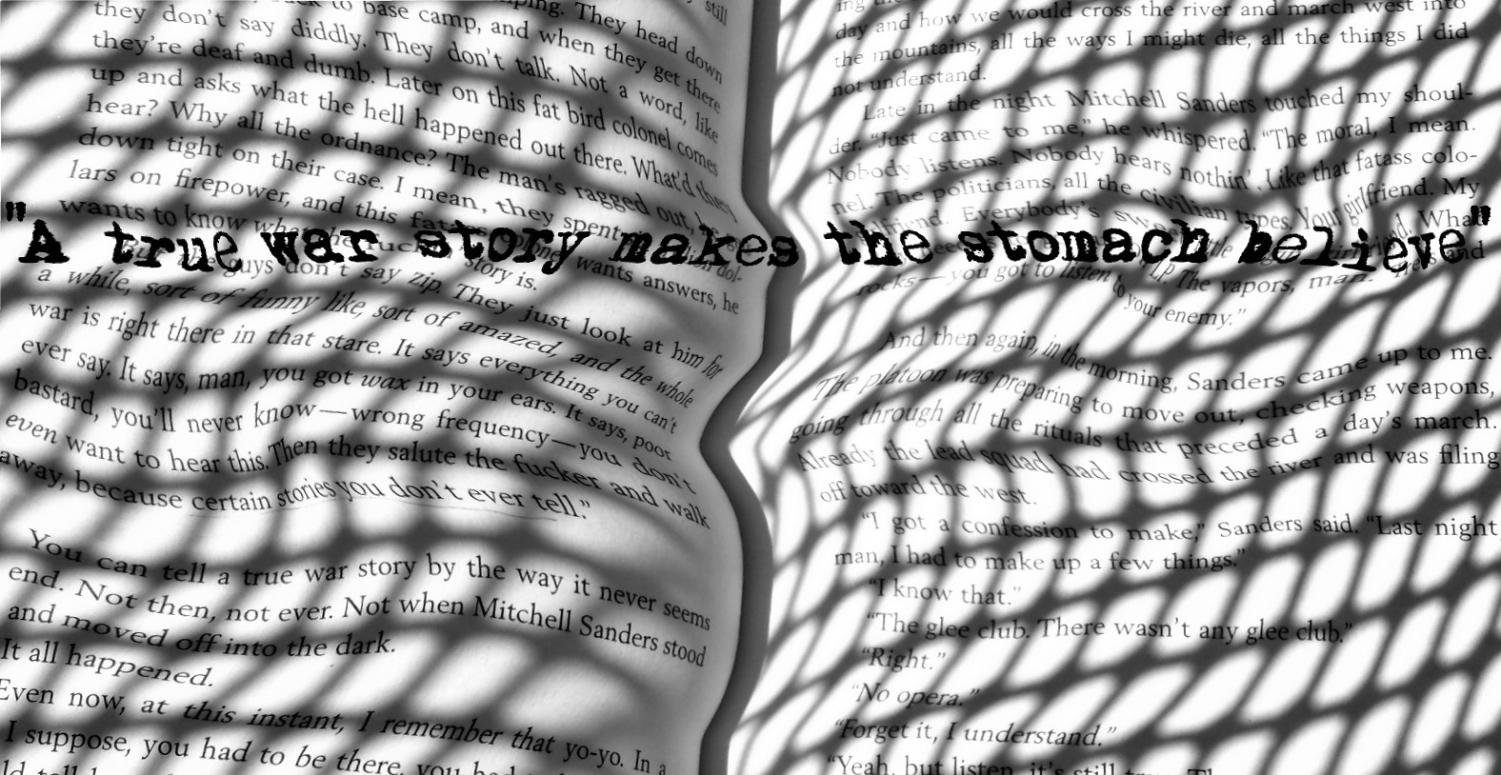
The Things They Carried is a powerful story that goes beyond war.
“As each soldier highlighted in the first chapter is featured in his own chapter later in the novel, the truth behind the war stories no longer matters to the reader, because it is the experience that each soldier endures that becomes YOUR truth. It is the shared burden of being human that makes this book so relatable.” While we may not have experienced the horrors of war or anything traumatic, Fucilli feels that “we are all fighting a war of some sort in life, which is what makes the book so relatable to all readers. What makes each story so enduring though is the humanity behind O’Brien’s words as he uses language that is raw and unadulterated, yet elegant and graceful.” That’s what Fucilli loves about this book, it uses the war as a medium to express ideas regarding human burden.
So, using the novel and its ideas about human burden, Fucilli likes to use the piece to remind her students “that everybody carries a burden of some sort in life, whether it is physical or emotional.” Fucilli believes that “like the soldiers in the novel who are too scared to appear vulnerable or weak, many of us hide the pain and the suffering that we “carry” every day, even though this is what makes us human.” Fucilli uses O’Brien’s lesson to help her students realize that “although we cannot always put down the things we carry in life, we can share our burdens with others through the artform of storytelling. If one person opens up and shares a story, then we too are connected to that individual.”
Fucilli said, “What I love most about this novel though is that it teaches all of us how to be more compassionate towards others, and how to better understand ourselves by not only telling our stories, but by listening to the stories that are all around us.” She keeps that in mind always, and she hopes that by sharing the book with her students, they will too.
Mr. Donn Reeves
Taking a different approach with his students, Mr. Reeves teaches the graphic novel Watchmen, written by Alan Moore and illustrated by Dave Gibbons. Don’t be fooled by the term graphic novel, however, because the piece is 416 pages long, and a bestseller that, according to Amazon.com, is “one of the most influential graphic novels of all time and a perennial bestseller… studied on college campuses across the nation.”
Reeves loves teaching Watchmen because it’s equal parts political satire, dystopian science fiction, and murder mystery, but above all else, it’s a deconstruction of American superhero mythology.” Everyone is familiar with superheroes, a few lores, and how heroes and villains are supposed to behave and act, but “what Alan Moore does in Watchmen makes us ask ourselves how the idea of superheroes would play out in the real world. What we get are characters who are in no way heroic; they’re broken, maladjusted people who are ultimately incapable of saving the day.” In a way, it’s a different perspective on fiction, reality, and the border that separates the two, as well as what would happen if we try to mix the two together.
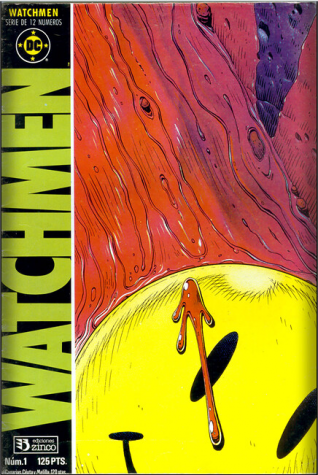
The famous graphic novel, Watchmen, by Alan Moore and Dave Gibbons.
Reeves also loves “how Moore and Gibbons allude to a myriad of different sources that deepen the novel’s meaning and serve as springboards to other avenues of discussion.” These include references to music, literature, art, science, and biblical stories.
Finally, there are the philosophies of the book and its characters, which are a major part of what has made the graphic novel so famous. Reeves “love[s] digging into the book’s philosophy. The character of The Comedian is a study in nihilism. Ozymandias and Rorschach represent the conflict between utilitarian and deontological ethics. In Dr. Manhattan we see the struggle between the ideas of determinism and libertarian free will.” While the story does get dark, the philosophies are all relevant, real, and important in our society, and they are timeless concepts that Reeves wants his students to explore and understand.
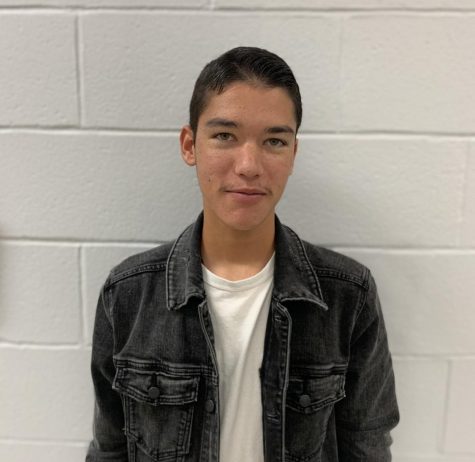
Vince is a senior at LRHS and a prominent staff writer for The Lancer Ledger. He has been a dedicated writer for over two years straight, devoting most...


